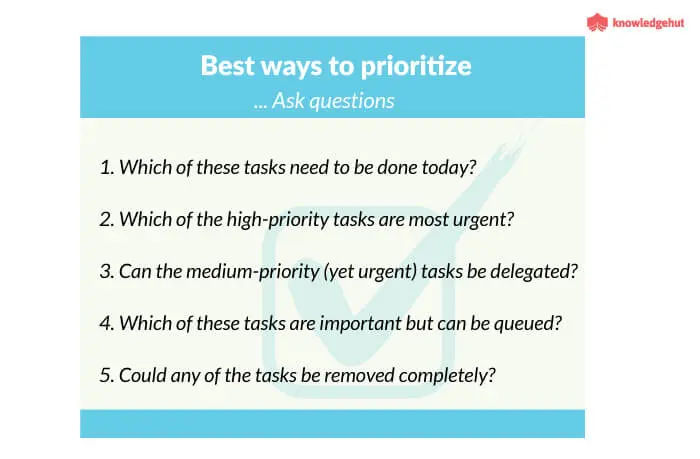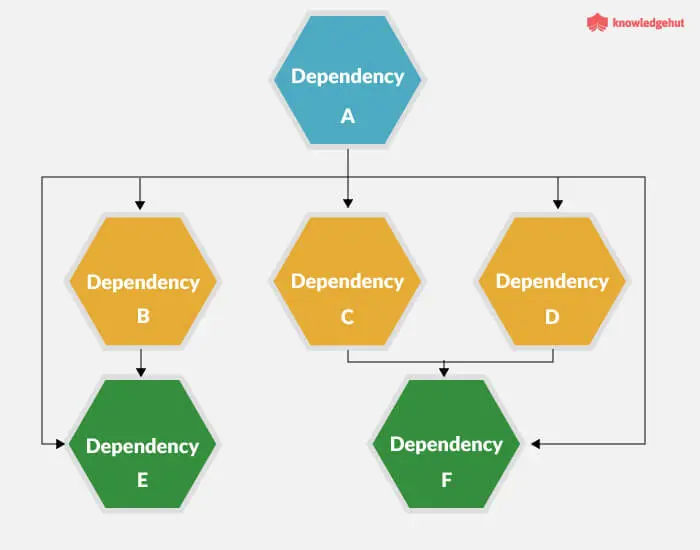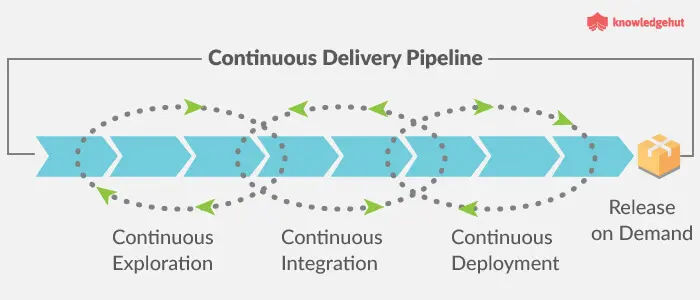- Blog Categories
- Project Management
- Agile Management
- IT Service Management
- Cloud Computing
- Business Management
- Business Intelligence
- Quality Engineer
- Cyber Security
- Career
- Big Data
- Programming
- Most Popular Blogs
- PMP Exam Schedule for 2024: Check PMP Exam Date
- Top 60+ PMP Exam Questions and Answers for 2024
- PMP Cheat Sheet and PMP Formulas To Use in 2024
- What is PMP Process? A Complete List of 49 Processes of PMP
- Top 15+ Project Management Case Studies with Examples 2024
- Top Picks by Authors
- Top 170 Project Management Research Topics
- What is Effective Communication: Definition
- How to Create a Project Plan in Excel in 2024?
- PMP Certification Exam Eligibility in 2024 [A Complete Checklist]
- PMP Certification Fees - All Aspects of PMP Certification Fee
- Most Popular Blogs
- CSM vs PSM: Which Certification to Choose in 2024?
- How Much Does Scrum Master Certification Cost in 2024?
- CSPO vs PSPO Certification: What to Choose in 2024?
- 8 Best Scrum Master Certifications to Pursue in 2024
- Safe Agilist Exam: A Complete Study Guide 2024
- Top Picks by Authors
- SAFe vs Agile: Difference Between Scaled Agile and Agile
- Top 21 Scrum Best Practices for Efficient Agile Workflow
- 30 User Story Examples and Templates to Use in 2024
- State of Agile: Things You Need to Know
- Top 24 Career Benefits of a Certifed Scrum Master
- Most Popular Blogs
- ITIL Certification Cost in 2024 [Exam Fee & Other Expenses]
- Top 17 Required Skills for System Administrator in 2024
- How Effective Is Itil Certification for a Job Switch?
- IT Service Management (ITSM) Role and Responsibilities
- Top 25 Service Based Companies in India in 2024
- Top Picks by Authors
- What is Escalation Matrix & How Does It Work? [Types, Process]
- ITIL Service Operation: Phases, Functions, Best Practices
- 10 Best Facility Management Software in 2024
- What is Service Request Management in ITIL? Example, Steps, Tips
- An Introduction To ITIL® Exam
- Most Popular Blogs
- A Complete AWS Cheat Sheet: Important Topics Covered
- Top AWS Solution Architect Projects in 2024
- 15 Best Azure Certifications 2024: Which one to Choose?
- Top 22 Cloud Computing Project Ideas in 2024 [Source Code]
- How to Become an Azure Data Engineer? 2024 Roadmap
- Top Picks by Authors
- Top 40 IoT Project Ideas and Topics in 2024 [Source Code]
- The Future of AWS: Top Trends & Predictions in 2024
- AWS Solutions Architect vs AWS Developer [Key Differences]
- Top 20 Azure Data Engineering Projects in 2024 [Source Code]
- 25 Best Cloud Computing Tools in 2024
- Most Popular Blogs
- Company Analysis Report: Examples, Templates, Components
- 400 Trending Business Management Research Topics
- Business Analysis Body of Knowledge (BABOK): Guide
- ECBA Certification: Is it Worth it?
- How to Become Business Analyst in 2024? Step-by-Step
- Top Picks by Authors
- Top 20 Business Analytics Project in 2024 [With Source Code]
- ECBA Certification Cost Across Countries
- Top 9 Free Business Requirements Document (BRD) Templates
- Business Analyst Job Description in 2024 [Key Responsibility]
- Business Analysis Framework: Elements, Process, Techniques
- Most Popular Blogs
- Best Career options after BA [2024]
- Top Career Options after BCom to Know in 2024
- Top 10 Power Bi Books of 2024 [Beginners to Experienced]
- Power BI Skills in Demand: How to Stand Out in the Job Market
- Top 15 Power BI Project Ideas
- Top Picks by Authors
- 10 Limitations of Power BI: You Must Know in 2024
- Top 45 Career Options After BBA in 2024 [With Salary]
- Top Power BI Dashboard Templates of 2024
- What is Power BI Used For - Practical Applications Of Power BI
- SSRS Vs Power BI - What are the Key Differences?
- Most Popular Blogs
- Data Collection Plan For Six Sigma: How to Create One?
- Quality Engineer Resume for 2024 [Examples + Tips]
- 20 Best Quality Management Certifications That Pay Well in 2024
- Six Sigma in Operations Management [A Brief Introduction]
- Top Picks by Authors
- Six Sigma Green Belt vs PMP: What's the Difference
- Quality Management: Definition, Importance, Components
- Adding Green Belt Certifications to Your Resume
- Six Sigma Green Belt in Healthcare: Concepts, Benefits and Examples
- Most Popular Blogs
- Latest CISSP Exam Dumps of 2024 [Free CISSP Dumps]
- CISSP vs Security+ Certifications: Which is Best in 2024?
- Best CISSP Study Guides for 2024 + CISSP Study Plan
- How to Become an Ethical Hacker in 2024?
- Top Picks by Authors
- CISSP vs Master's Degree: Which One to Choose in 2024?
- CISSP Endorsement Process: Requirements & Example
- OSCP vs CISSP | Top Cybersecurity Certifications
- How to Pass the CISSP Exam on Your 1st Attempt in 2024?
- Most Popular Blogs
- Best Career options after BA [2024]
- Top Picks by Authors
- Top Career Options & Courses After 12th Commerce in 2024
- Recommended Blogs
- 30 Best Answers for Your 'Reason for Job Change' in 2024
- Recommended Blogs
- Time Management Skills: How it Affects your Career
- Most Popular Blogs
- Top 28 Big Data Companies to Know in 2024
- Top Picks by Authors
- Top Big Data Tools You Need to Know in 2024
- Most Popular Blogs
- Web Development Using PHP And MySQL
- Top Picks by Authors
- Top 30 Software Engineering Projects in 2024 [Source Code]
- More
- Tutorials
- Practise Tests
- Interview Questions
- Free Courses
- Agile & PMP Practice Tests
- Agile Testing
- Agile Scrum Practice Exam
- CAPM Practice Test
- PRINCE2 Foundation Exam
- PMP Practice Exam
- Cloud Related Practice Test
- Azure Infrastructure Solutions
- AWS Solutions Architect
- AWS Developer Associate
- IT Related Pratice Test
- ITIL Practice Test
- Devops Practice Test
- TOGAF® Practice Test
- Other Practice Test
- Oracle Primavera P6 V8
- MS Project Practice Test
- Project Management & Agile
- Project Management Interview Questions
- Release Train Engineer Interview Questions
- Agile Coach Interview Questions
- Scrum Interview Questions
- IT Project Manager Interview Questions
- Cloud & Data
- Azure Databricks Interview Questions
- AWS architect Interview Questions
- Cloud Computing Interview Questions
- AWS Interview Questions
- Kubernetes Interview Questions
- Web Development
- CSS3 Free Course with Certificates
- Basics of Spring Core and MVC
- Javascript Free Course with Certificate
- React Free Course with Certificate
- Node JS Free Certification Course
- Data Science
- Python Machine Learning Course
- Python for Data Science Free Course
- NLP Free Course with Certificate
- Data Analysis Using SQL
How To Run Fixed Date Projects In Agile?
By Lindy Quick
Updated on Aug 07, 2018 | 6 min read | 8.6k views
Share:
Various organizations teach different things and make you aware of different points of view. One thing you will learn early in your career is how to “smell” fake fixed dates. Unfortunately, there are still some organizations or people that believe that setting deadlines will motivate people to get work done. Now, how to run fixed-date projects in Agile is the concern.
These are fake deadlines, without real urgency behind them and without any loss of business or clients. They are dangerous because they create a fake rush, get people to work late hours for no good reason, and in the end, there is nothing to celebrate for what they did.
However, there are some legitimate cases when a certain solution is required in place by a fixed date. Go for the best Agile certifications and master the agile methodology.
How to Run Fixed Date Projects in Agile?
It is seen in some cases how Agile teams have been able to deal with deadlines successfully. Some of these examples are regulatory changes, event-driven or promotional, and holidays.
Regulatory: These are changes that are forced on a company usually by Government or Market regulations.
Event-driven: These changes are usually driven by Marketing and supported by Sales. They are opportunities to showcase the strength of the brand, and enforce market presence and/or domination in events like expos, conferences, partner announcements, marketing announcements, etc.
Promotional or Holidays: These changes are usually driven by Sales and supported by Marketing. Think Christmas, Valentine’s Day, or similar depending on where you live. These are days that retailers “live for”.
They kind of boil down to the need for an area of the organization to have an offer ready by a certain date that is controlled by external factors/organizations. The good thing about these cases is that usually, we have a decent amount of time in hand to prepare and deliver. During this time, you can find tools and techniques that help you more than others.
Good Understanding of the Meaning of Fixed Date
- What happens if we miss the date?
- What happens if we miss the date by a lot/by a little?
- Do we have to have it in place feature A or will B do it?
- Can we do A manually?
- Is the deadline for all our clients or just a portion of them?
Keep asking from all points of view. This is a good exercise that Agile teams are used to doing since they constantly split their stories into smaller pieces of work. Now bring all that into splitting the work for the deadline into smaller BUT meaningful and valuable pieces.
Insider Tips to Land Your Dream Scrum Master Job
Includes Scrum Resume Sample
Presenting Real-time Examples
In one of the cases, in which I assisted my team, we were given only five days to deal with a change required by one of the provinces of Canada. Two of those days were taken by speaking with lawyers to clarify all the details of the change requested. After that, the team was able to understand the amount of work and what was the minimum they had to do to satisfy this new regulation. It was done on time.
In another case, the retail company had to decide if what they were asking was possible to be done by mid-November. They agreed that if it was not in place by then, there was no value in putting effort towards it since it will be too late for Christmas promotions.
In a different case, a product company wanted to present the new features of their 3D software at the most prestigious event in the industry. They decided to be in a good place where the Product Owner knew what wasn’t working or how to get around the features that would be demoed on the expo floor.
The goal was to get people excited to have them subscribe and then follow up when the software was ready with the features and high-quality experience. So, keep asking, keep slicing, and keep finding ways to do the minimum required. Unless, you have all the time you need and in that case, do what is needed with high quality.
The image below will perfectly explain how asking questions can help you prioritize.

Product Owners and People with Skills Required are Available on Very Short Notice
Although we have asked all the questions and we have figured out the smallest piece of work to start with, questions and issues will always come up. With the Product Owner not always present to respond to questions from the team, we end up with wasted time. The same is true for any specialist or any skill required to achieve the deadline. We manufacture dependencies.
If this fixed date is high-priority, then let us give it the right attention and the right dedication. If many things are high priority, it is usually a smell that prioritization is not well and is probably based on who screams the loudest. This is where we need to make sure that expectations are set and clear, where we understand the priorities of the organization, and where people will focus.
Coming to dependency management, the following figure can help visualize the ideal ways to manage dependency and streamline your workflow.

Dependency management is done best when we remove dependencies rather than manage them. Take time to identify dependencies on skills, knowledge, process, sequencing, and any other area that affects you. Take time to look at the whole picture and set in place communication channels, and core working hours, and give heads up with enough time for other areas to prepare for your requests.
But one thing that works the best is to have a team that works very closely, possibly co-located and supported with collaboration tools. It would be great if this team is already working together and this request is a new addition to their prioritized backlog. Otherwise, you will lose time with onboarding.
Continuous Delivery Pipeline
We are not done until we are done. And done means it is accepted all the way to production. There is work to develop the change and then there is work to deploy the change. If your company has a long deployment process with many layers of approvals or documents to complete, then you are shortening the time for development. This adds extra stress to the team that will work on this change and frankly speaking from the Lean Governance point of view, a lot of waste in your system.
Often, teams are asked to justify the need for investing in automation and better technology. These are the days when that investment has high returns and pays you back many times over. Continuous delivery gives teams the advantage of early and often feedback. The earlier you are able to deliver a solution the faster you learn about what risks you have to deal with when the changes are in the hands of the customers.

There are many ways to leverage early deployments when Continuous Delivery Pipeline is in place. You will be able to deliver a small portion of the change (often you hear MVP but I prefer Learning Release), and you will be able to test with a small number of customers or for a specific geolocation of your customers.
Through this, you reduce the risk of releasing a valuable solution on the requested fixed date. No need to work extra hours or late at night.
Empower your project management career with PRINCE2 accredited training from leading organizations. Maximize your skills and knowledge with our PRINCE2 accredited training.
Hire More People and Make a Bigger Team
Big teams move slowly. Also, onboarding new people on the team is downtime for specialists as well because they will do the training. For changes that have a short time to deal with a fixed date, adding people to the team will only slow you down and create more confusion.
Cut Corners
Unfortunately, I often see the practice of “get it off my plate”, where a team just patches together a quick fix and then sends it over to production to call it a success. Although everyone knows that this change was not done right, we never give time for teams to go back and do it right.
So if you can, do it right from the beginning or make sure the team does not start working on something else until they refactor the solution. This will allow you to make future changes easier and faster, even if the future changes are urgent and have a fixed date.
Stop Asking “Why?”
In everything we do, we need to continue asking “Why” and challenge better ways of working. Just because this is how things are done now, it doesn’t need to be how we have to keep doing it in the future.
The spirit of Agile is continuous improvement and that is where we keep learning and getting better. Asking “why” is where we get out of our comfort zone and become creative with the solutions for our customers.
Get Free Consultation
By submitting, I accept the T&C and
Privacy Policy
Ready to lead with Scrum expertise?


